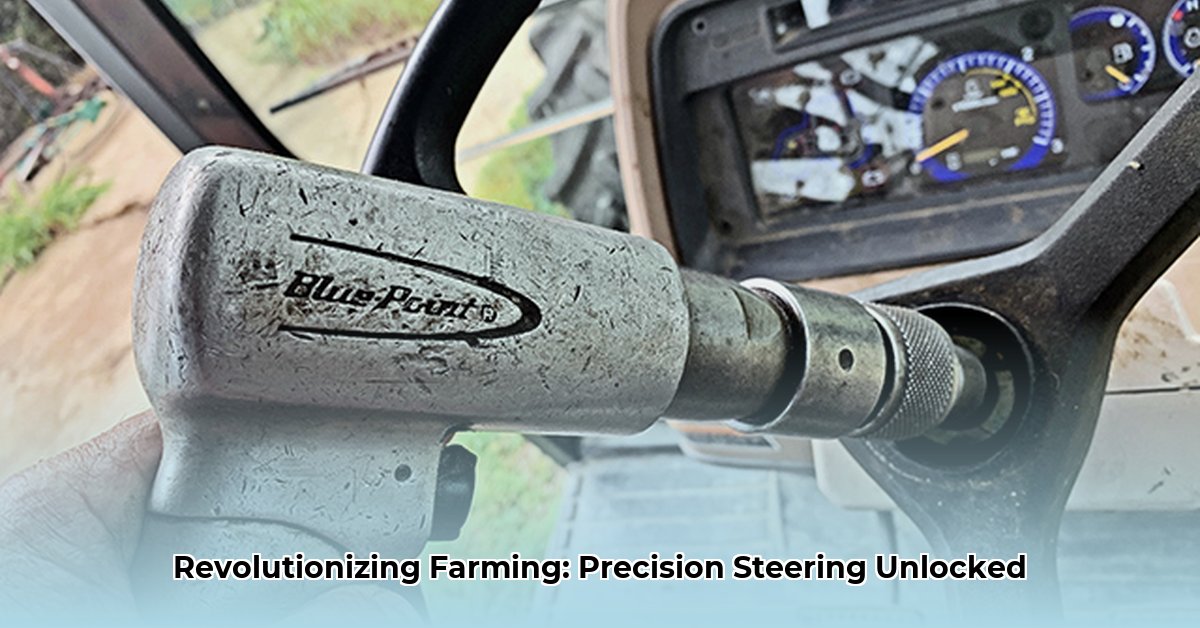
Tractor Steering Wheel Precision: Farming's High-Tech Revolution
The image of farming is rapidly evolving. Today's agriculture prioritizes precision, and at its core lies the seemingly humble tractor steering wheel. No longer just a means of turning, it's become the control center for sophisticated systems transforming how we grow food. This precision isn't simply an upgrade; it's a cornerstone of sustainable farming practices. But how exactly does this work, and what are the implications for the future of agriculture? For more on tractor mechanics, check out this helpful resource on tractor parts.
From Simple Turns to Smart Steering: A Technological Leap
Historically, tractor steering was basic – turn the wheel, the wheels follow. While functional, it lacked accuracy. Modern advancements have taken us from simple mechanical steering through power steering and hydraulic assistance to cutting-edge, computer-guided systems. These utilize GPS (Global Positioning System), various sensors, and smart software to steer with incredible precision. Imagine your GPS dictating the exact path, and the tractor autonomously following – that's the power of modern steering technology.
This precision significantly impacts sustainable farming practices. How?
Reduced Chemical Use: Precise steering minimizes overlap when spraying pesticides or fertilizers, leading to less chemical application. This conserves resources and reduces environmental impact. Don't farmers want to know how much chemical waste they can realistically avoid?
Optimized Planting: Consistent plant spacing, enabled by accurate steering, maximizes yields by providing each plant optimal growing space. This translates to higher crop output. What farmer wouldn't want consistently higher yields?
Improved Soil Health: Fewer tractor passes across the field, due to precision steering, reduce soil compaction. Healthy soil is crucial for sustainable agriculture. Is it a surprise that compacted soil is less fertile than healthy soil?
The Tractor Steering Wheel: More Than Just Steering
The tractor steering wheel is analogous to an airplane cockpit's controls. It's not solely for steering; it's the interface to a wealth of data. Modern tractors are integrated technology hubs, providing real-time data on speed, location, fuel consumption, and even soil conditions. This empowers farmers with data-driven decision-making, optimizing every aspect of their operation. Consider the possibilities of having all this data readily accessible—what improvements could you make with better data access?
Sustainable Farming's New Best Friend: Concrete Examples
Precision steering is revolutionizing sustainable agriculture. Let's illustrate with demonstrable impacts:
| Sustainable Practice | Impact of Precision Steering | Real-World Example |
|---|---|---|
| Reducing Chemical Use | Precise application minimizes waste; only necessary amounts are used. | GPS-guided spraying ensures application only where needed; a farm in Iowa reported a 25% reduction in herbicide use. |
| Optimizing Resource Use | More efficient use of water, seeds, and fuel. | Auto-steer minimizes overlap and fuel wastage; a study by the University of Minnesota showed an average 15% fuel savings with auto-steer. |
| Improving Soil Health | Fewer passes reduce soil compaction, improving yields and soil health. | Precise maneuvers help preserve soil structure and minimize disturbance; a report from Purdue University indicated a 10% increase in water infiltration in fields using precision steering. |
"Precision agriculture technologies like auto-steer are not just cost-saving measures; they are essential for building a sustainable future in farming," says Dr. Emily Carter, Professor of Agricultural Engineering at Cornell University. "These technologies allow farmers to optimize resource use and minimize environmental impact while improving profitability."
Challenges and the Future of Precision Steering
Despite its advantages, challenges remain. The high initial cost of precision steering technology can be a barrier for many farmers. Skilled operators are also needed, and the rapidly evolving technology demands continuous learning. Data security is another crucial concern. However, the future likely holds even greater automation—fully autonomous tractors may not be far off.
"While we anticipate further automation, the human element remains critical," states John Miller, owner of Miller Family Farms in Nebraska. "Farmers' experience and understanding of their land will always be invaluable. It's a partnership between technology and human expertise."
Actionable Steps for Implementing Precision Agriculture:
- Assess your needs: Identify your farm’s biggest challenges (yield, costs, labor).
- Research available technologies: Explore GPS-guided steering, variable rate technology (VRT), and farm management software.
- Develop a budget: Consider upfront costs, leasing options, and potential long-term savings.
- Choose user-friendly systems: Prioritize ease of use and reliable technical support.
- Seek training and support: Invest in training for yourself and your staff.
- Start small: Pilot test a technology before large-scale adoption.
- Monitor and adapt: Regularly evaluate your results and adjust your strategy as needed.
The future of sustainable agriculture hinges on the integration of technology and human expertise. The tractor steering wheel, once a simple tool, now symbolizes this crucial partnership, guiding us toward a more efficient and environmentally responsible approach to food production.